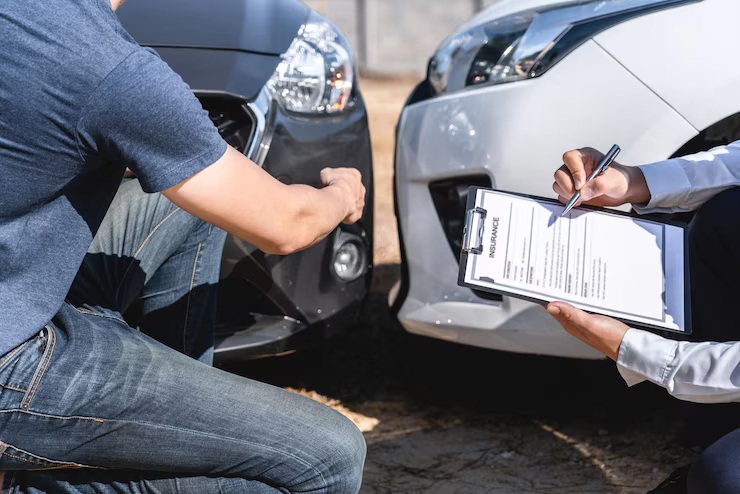Each year, millions of road accidents are caused by everyday mistakes behind the wheel. According to the National Highway Traffic Safety Administration (NHTSA), over 90% of crashes are linked to human error.
Many of these accidents could be avoided by changing unsafe driving habits. If a serious crash occurs, a car accident lawyer Coeur d’Alene ID, may need to step in to help victims recover damages and hold the right party accountable.
Some driving behaviors are so common they often go unnoticed—until something goes wrong. Here are ten habits that increase the risk of a crash, and practical ways to change them.
1. Distracted Driving
Texting, eating, or adjusting the radio while driving can easily lead to a collision. Even a two-second glance away from the road doubles the chance of an accident.
How to break it: Keep phones out of reach. Set your GPS and music before driving. Use “Do Not Disturb” mode to block notifications.
2. Speeding
Driving over the speed limit reduces reaction time and makes crashes more deadly. In 2022, speeding contributed to over 29% of all traffic deaths in the U.S.
How to break it: Use cruise control when safe. Leave early to avoid feeling rushed. Watch for speed limit signs and traffic conditions.
3. Tailgating
Following too closely cuts down on the time to react if the car ahead stops suddenly. It’s a leading cause of rear-end crashes.
How to break it: Keep a minimum of three seconds of space between vehicles. Increase distance in bad weather or at night.
4. Failing to Signal
Not using turn signals confuses other drivers and leads to side-swipes or intersection crashes.
How to break it: Make signaling a routine habit. Signal every lane change and turn, no matter how small the movement.
5. Running Red Lights
Ignoring traffic signals puts drivers at risk of T-bone crashes, which often lead to severe injuries.
How to break it: Slow down when approaching yellow lights. Avoid trying to “beat the red.” Always stop completely before turning on red where allowed.
6. Driving While Drowsy
Fatigue slows reaction time and impairs judgment. The CDC compares drowsy driving to drunk driving in terms of risk.
How to break it: Take regular breaks on long drives. If tired, pull over safely and rest. Avoid driving late at night when possible.
7. Aggressive Driving
Weaving through traffic, cutting others off, and brake-checking are forms of aggressive behavior that escalate crash risk.
How to break it: Stay calm during delays. Use patience in heavy traffic. Avoid reacting to rude drivers.
8. Ignoring Weather Conditions
Rain, snow, and fog call for slower speeds and more caution. Many drivers ignore the need to adjust in bad weather.
How to break it: Use headlights, reduce speed, and increase following distance. If visibility is too poor, wait for conditions to improve.
9. Improper Lane Changes
Sudden lane shifts or failure to check blind spots can lead to dangerous side collisions.
How to break it: Always signal and check mirrors before changing lanes. Avoid weaving in and out of traffic.
10. Driving Without Seat Belts
Seat belts reduce the risk of fatal injury by 45% for drivers and passengers in the front seat, yet some still forget or choose not to wear them.
How to break it: Make buckling up the first thing after entering the vehicle. Check that all passengers are also secured.
Why These Habits Matter Legally
When drivers make unsafe choices, they may be held responsible for resulting crashes. In civil court, injured parties must prove that the at-fault driver acted carelessly. These common habits can be used as evidence of negligence. Legal professionals, including Coeur d’Alene, Idaho attorneys, often rely on police reports, traffic camera footage, and witness accounts to show which behaviors contributed to a crash.
Breaking these habits doesn’t just prevent accidents—it also protects individuals from legal consequences if something goes wrong.
In short
Changing dangerous driving habits isn’t just about avoiding tickets—it’s about saving lives. Simple actions like slowing down, signaling, and staying focused can make a big difference. Most accidents are preventable, and many are caused by routine behaviors drivers don’t even think twice about. Taking responsibility on the road protects everyone.
But when a crash does happen, legal help may be needed. In such cases, attorneys serving in Coeur d’Alene, Idaho, can help guide injured victims through the legal process and fight for fair compensation. Safe habits today can prevent tragedy tomorrow.



